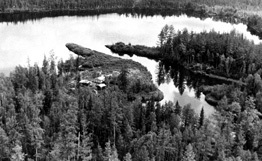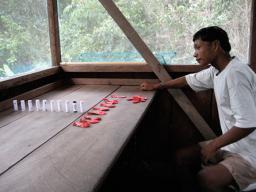The massive blast, equivalent to around 15 megatons of TNT, occurred approximately 7-10 km (3-6 miles) above the Stony Tunguska River in a remote area of central Siberia early on June 30, 1908. The explosion, which was estimated to measure up to 5 on the Richter scale, knocked people off their feet 70 km away and destroyed an area of around 2,150 sq km (830 sq miles).
And if the explosion had occurred some 4 hours and 47 minutes later, due to the Earth's rotation it would have completely destroyed the then Russian capital of St. Petersburg.

|
| ©Unknown |




